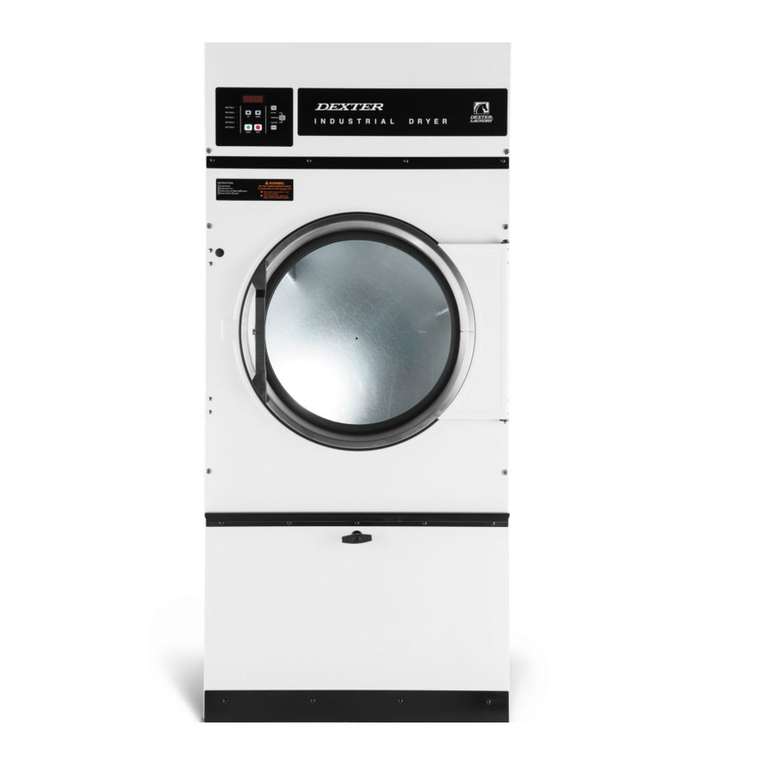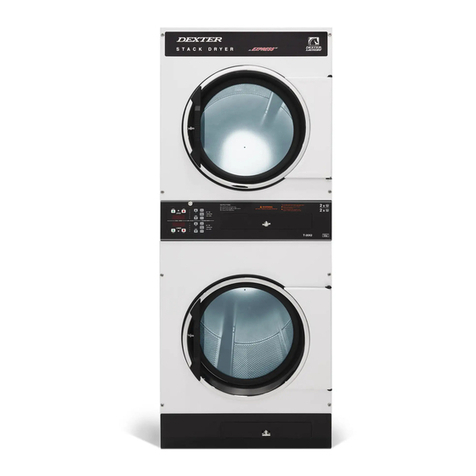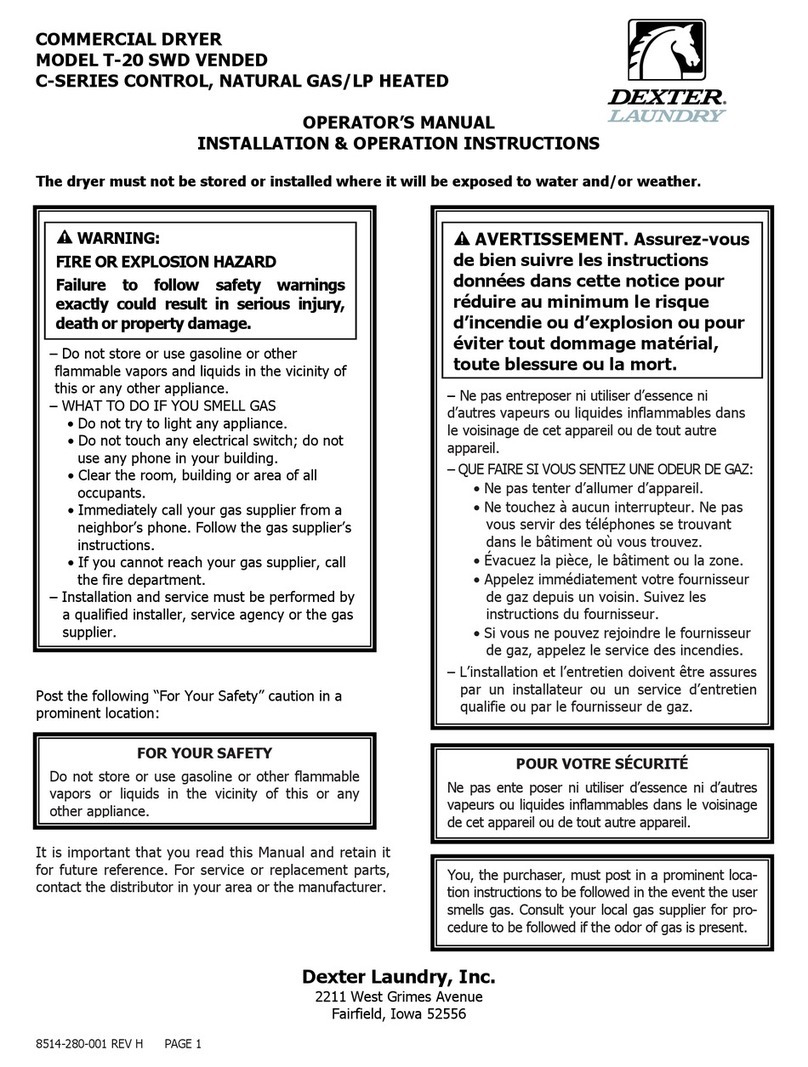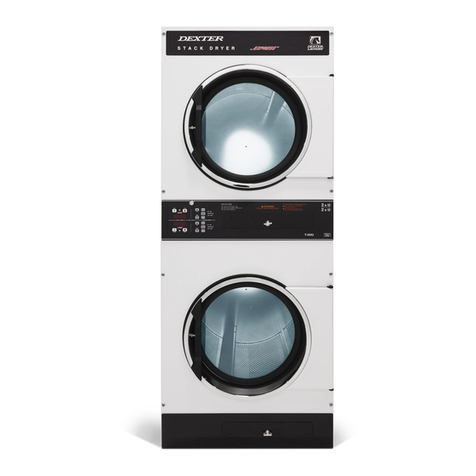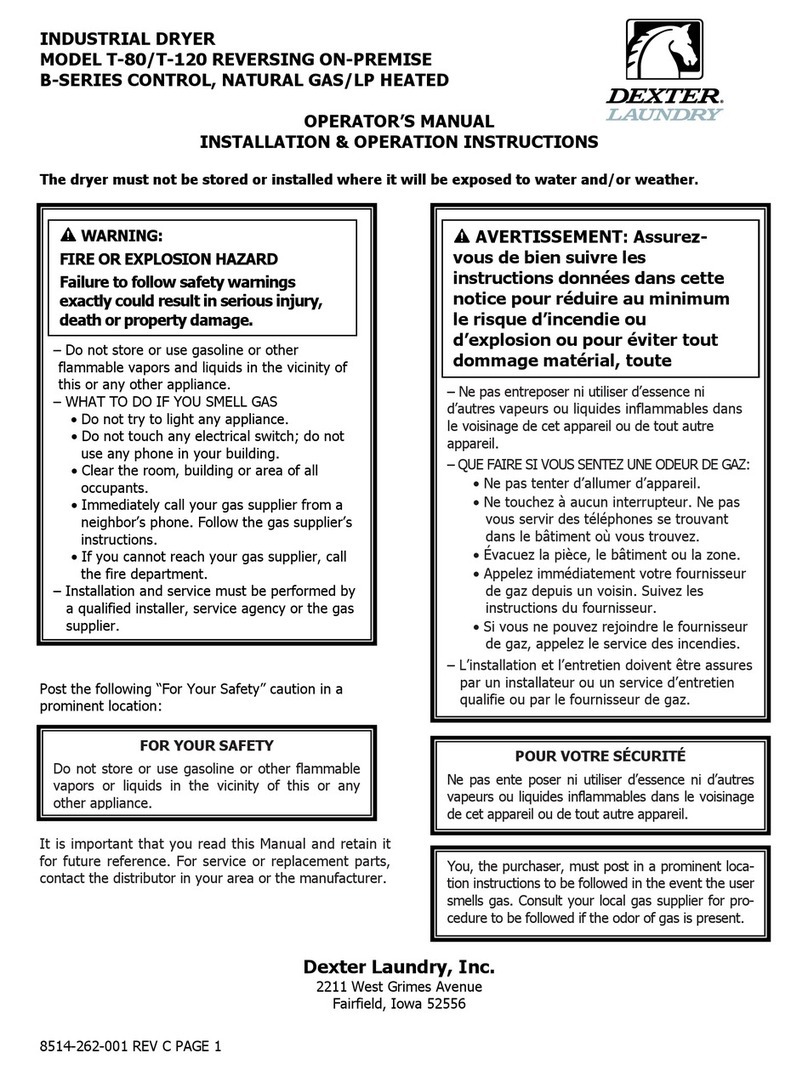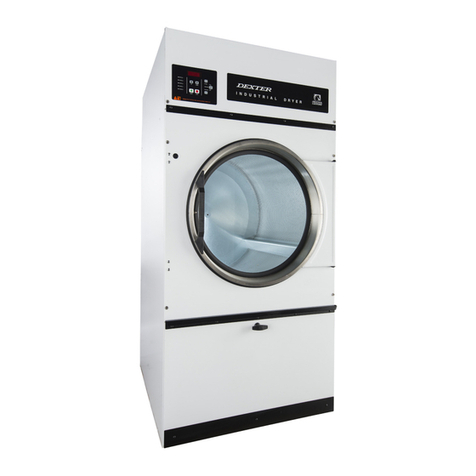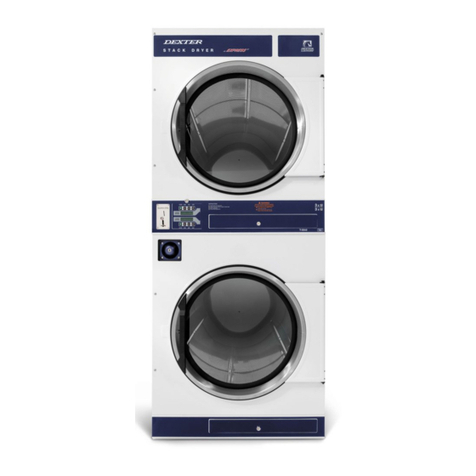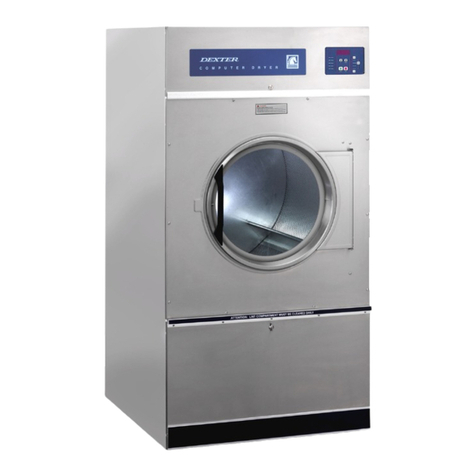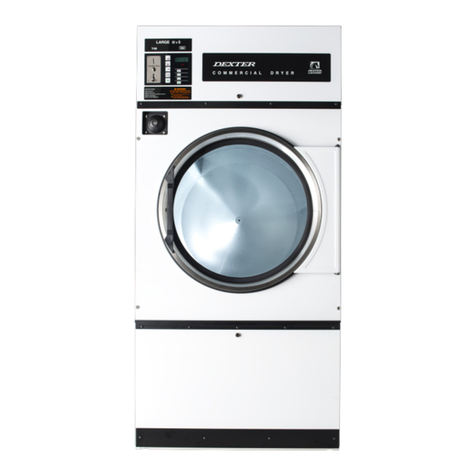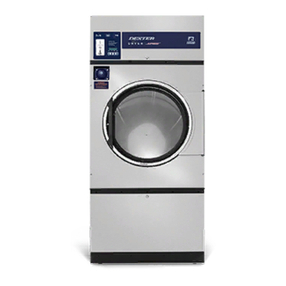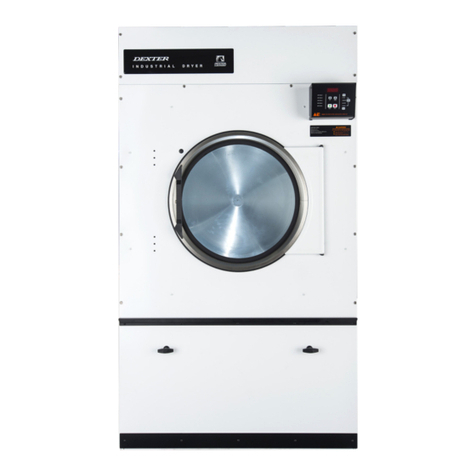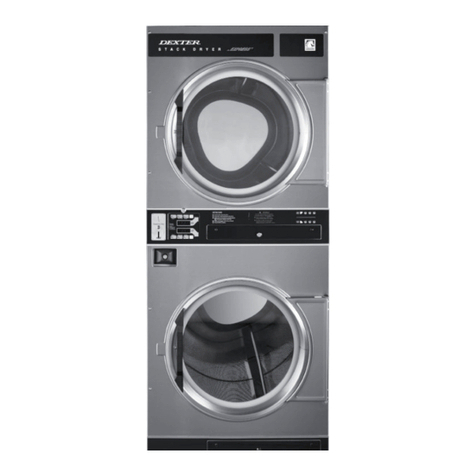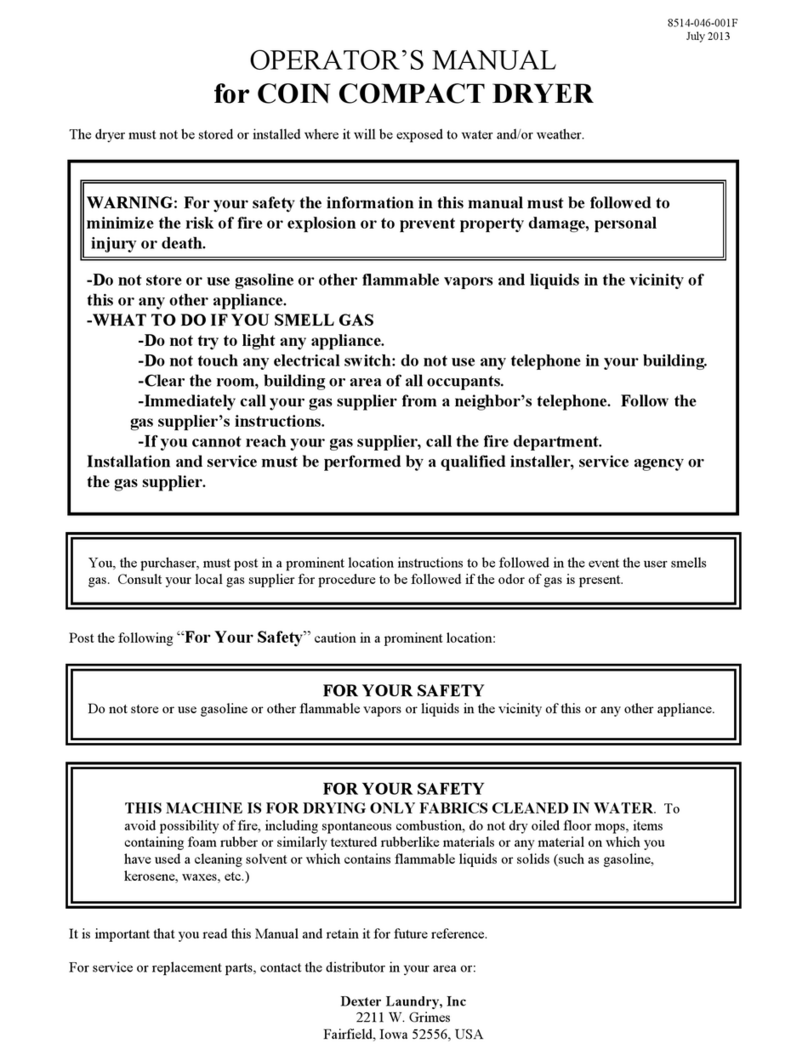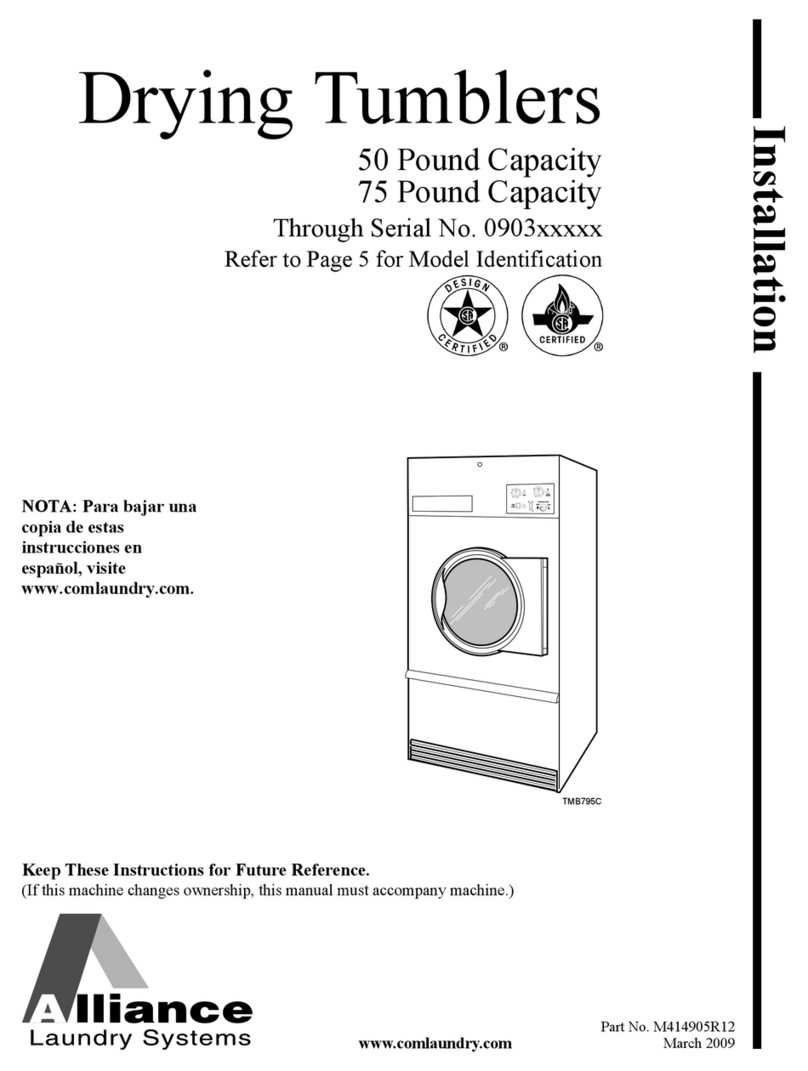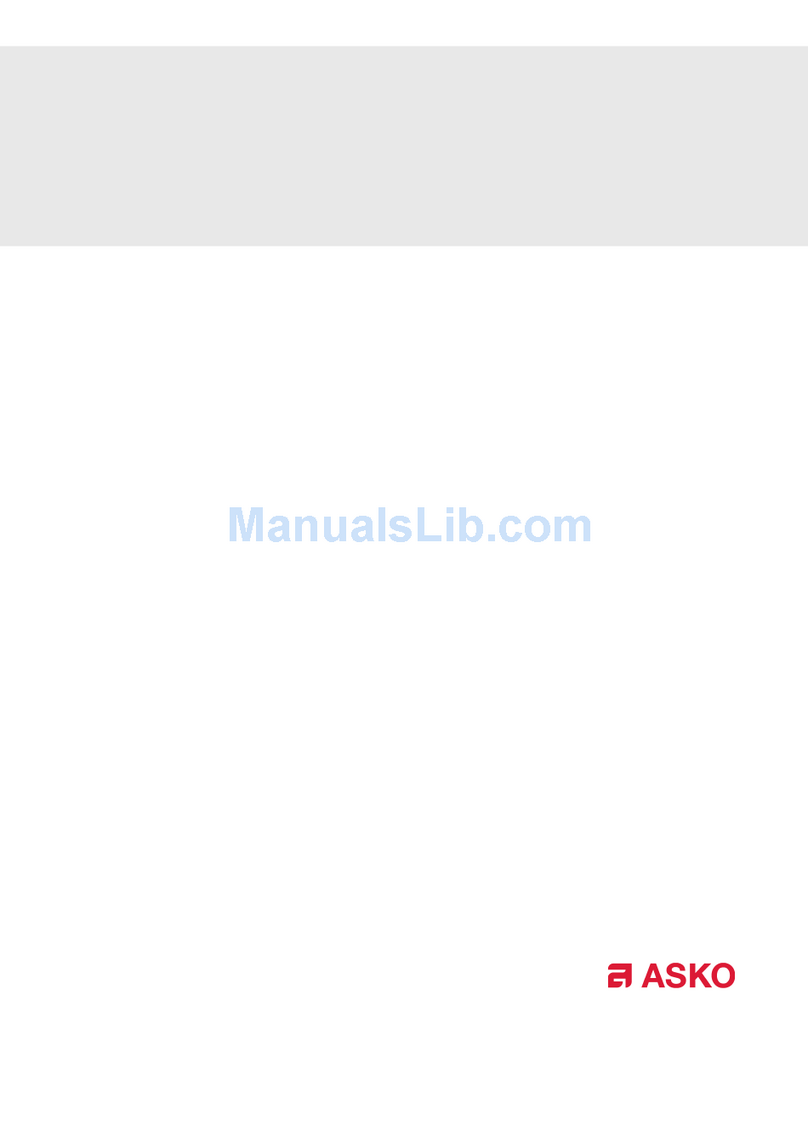
8514-289-001 REV A PAGE 9
4. EXHAUST INSTALLATION. (Refer to Figure 3) Exhausting of the dryer(s) should be planned and
constructed so that no air restrictions occur. Any restriction due to pipe size or type of installation can
cause slow drying time, excessive heat, and lint in the room.
From an operational standpoint, incorrect or inadequate exhausting can cause a cycling of the high limit
thermostat, which shuts off the heating elements and results in inefficient drying.
The exhaust duct connection near the top of the dryer will accept a 6” (152 mm) round duct. Individual
exhausting of the dryers is recommended. All heat, moisture, and lint should be exhausted outside by
attaching a pipe of the proper diameter to the dryer adapter collars and extending it out through an
outside wall. This pipe must be very smooth on the inside, as rough surfaces tend to collect lint, which
will eventually clog the duct and prevent the dryer from exhausting properly. All elbows must be
smooth on the inside. All joints must be made so the exhaust end of one pipe is inside the next one
downstream. Do not assemble pipe or elbows with screws or other fastening means that will extend in to
the pipe or elbows and catch lint. The addition of an exhaust pipe tends to reduce the amount of air the
blower can exhaust. This does not affect the dryer operation if held within practical limits. For the most
efficient operation, it is recommended that no more than 14 ft. (4.25 m) of straight 6 in. (152 mm)
diameter pipe with two right angle elbows be used for each cylinder.
Maintain a minimum of 1” (25mm) clearance between duct and combustible material.
If the exhaust pipe passes through a wall, a metal sleeve of slightly larger diameter should be set in the
wall and the exhaust pipe passed through this sleeve. This practice is required by some local codes and is
recommended in all cases to protect the wall.
This type of installation should have a means provided to prevent rain and high winds from entering the
exhaust when the dryer is not in use. A hood with a hinged damper can be used for this purpose.
Another method would be to point the outlet end of the pipe downward to prevent entrance of wind
and rain. In either case, the outlet should be kept clear, by at least 24 in. (610 mm) of any objects,
which would cause air restriction.
Never install a protective screen over the exhaust outlet.
When exhausting a dryer straight up through a roof, the overall length of the duct has the same limits as
exhausting through a wall. A rain cap must be placed on top of the exhaust and must be of such a type
as to be free from clogging. The type using a cone shaped “roof” over the pipe is suitable for this
application.
Exhausting the dryer into a chimney or under a building is not permitted. In either case there is a danger
of lint buildup, which can be highly combustible.
Installation of several dryers, where a main discharge duct is necessary, will need the following
considerations for installation (see Figure 3). Individual 6” (152 mm) exhaust ducts from each dryer
should enter main discharge duct at a 45-degree angle in the direction of discharge airflow.
NOTE: Never install the individual ducts at a right angle into the main discharge duct.
The individual ducts from the dryers can enter at the sides or bottom of the main discharge
duct. Figure 3 indicates the various round main duct diameters to use with the individual
dryer ducts. The main duct can be rectangular or round, provided adequate airflow is
maintained. The total exhausting (main discharge duct plus duct outlet from the dryer)
should not exceed the equivalent of 14 ft. (4.25 m) and two elbows. The diameter of the
main discharge duct at the last dryer must be maintained to exhaust end.
NOTE: A small diameter duct will restrict airflow; a large diameter duct will reduce air
velocity - both contributing to lint build up. An inspection door should be provided for
periodic clean out of the main duct.
